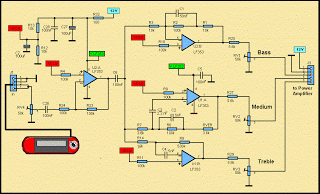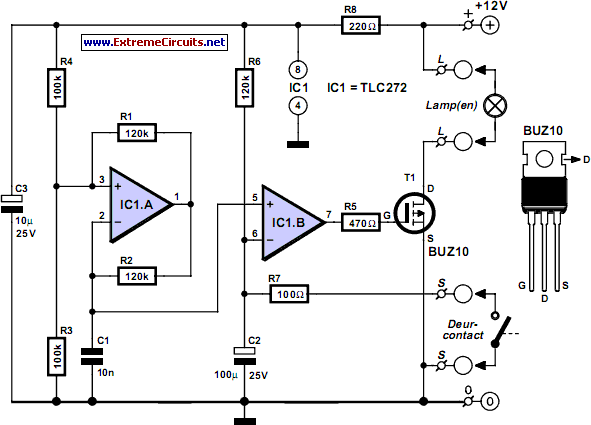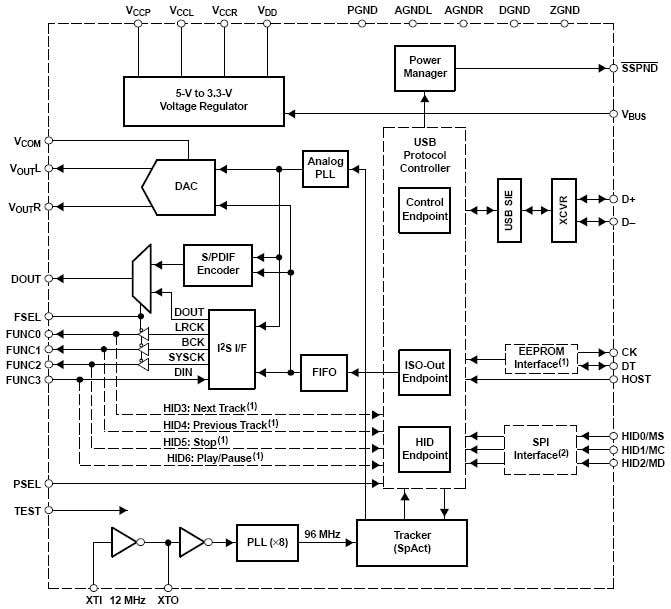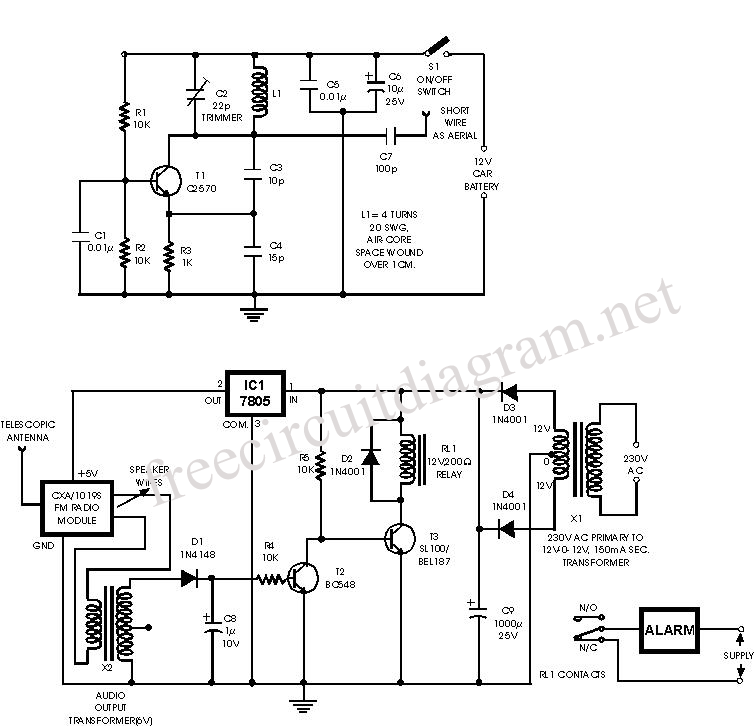
car reverse beeper
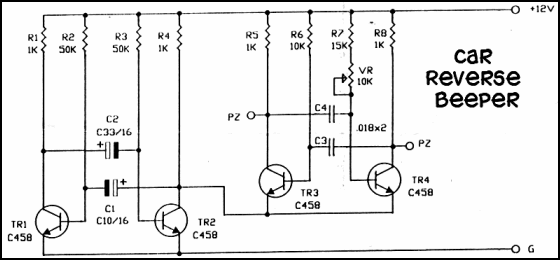
After installation in the car (not running but in reverse with the emergency brake engaged), the system functioned well. However, when the car was started and reversed out of the garage, the beeping frequency became erratic while tapping the brake or turning the steering wheel. It appears that the small output voltage to the piezo buzzer varies. The sensitivity of piezo buzzers to applied voltage is uncertain, particularly for the specific model in use. Experimentation with different voltages applied to the buzzer is recommended to determine if voltage variation is the suspected cause of the issue. Additionally, observing the backup lights is crucial, as they likely inform the alarm that the vehicle is in reverse. If the backup lights flicker, addressing that issue should take precedence before further troubleshooting. The circuit in question may include a voltage regulator, although the specifics are unclear. An LM317 voltage regulator could potentially be employed with the backup light circuit, although this is speculative. The beeping sound is produced by two astable multivibrators, with a slower one gating a faster one to create the "beep, beep, beep" noise. There is no need for a regulator if the issue is due to a construction fault or a problem with the vehicle's electrical system. Potential interference from ignition or alternator noise may also be a factor. Adding a 100-ohm resistor in series with the +12V line, along with a bypass capacitor (at least 100µF) to ground from the junction of the resistor and the buzzer, may help mitigate these issues. Reversing alarms are mandated in the U.S. for industrial and construction vehicles, and some companies require personal vehicles to be equipped with such alarms while on company property. Visitors are often required to sound the horn before backing up. Similar regulations may exist in Australia, where flashing lights or other warnings on the back of vehicles could be more appropriate. It is acknowledged that the beeping sound may not always be perceived as a warning, as it could originate from various vehicles reversing in different directions.
The described electronic circuit involves a piezo buzzer that is activated when the vehicle is in reverse, providing an auditory alert for safety. The erratic beeping indicates potential voltage fluctuations affecting the buzzer's performance. Piezo buzzers are known for their sensitivity to voltage changes, which can lead to variations in sound frequency. The circuit's design may include a voltage regulator to stabilize the output voltage; however, it is essential to assess whether the existing circuit adequately manages voltage levels under varying conditions, such as when the vehicle's electrical load changes during operation.
The implementation of two astable multivibrators allows for the generation of a consistent beeping sound. The slower multivibrator controls the timing of the faster one, producing a rhythmic sound that serves as an alert. If the beeping becomes inconsistent, it may suggest that the power supply fluctuates due to other electrical components in the vehicle, such as the ignition system or alternator. To address these potential issues, incorporating a 100-ohm resistor in series with the power supply line can help reduce current spikes that might affect the buzzer's operation. The addition of a bypass capacitor to ground can further filter out noise and stabilize the voltage supplied to the buzzer.
In summary, ensuring the proper functionality of the backup alarm system involves careful monitoring of the voltage supplied to the piezo buzzer, evaluating the performance of the backup lights, and potentially modifying the circuit to mitigate electrical noise. This approach will enhance the reliability of the reversing alarm, thereby improving safety for pedestrians and other vehicles in the vicinity.After installing in the car (Not running but with it in reverse and with emergency brake on) it also worked good! The when I started the car and backed out of the garage the beeping frequency became very eratic as I tapped the brake or turned the steerin
g wheel. Apparently the small output voltage to the Pizzo changes. I don`t know how sensitive piezo buzzers are to applied voltage - especially the one you have. I`d experiment by applying different voltages to the buzzer to see what happens - if for no other reason than to rule out or rule in the voltage variation that you suspect as a cause. You might also establish whether or not you`ll be satisfied with the performance of the buzzer at other voltages.
I`d also have someone observe the backup lights. I`d guess this is where your circuit tells your alarm that you are in reverse. If the backup lights are flickering you might want to repair that first then move on. I don`t know what your circuit does - maybe it`s a voltage regulator already - I`m not sufficiently skilled to recognize the circuit. It would seem that an LM317 would do the job directly off the backup light circuit but that`s just a shot in the dark, so to speak.
It`s simply two astable multivibrators, with a slow one gating a fast one, so you get the `beep, beep, beep` noise. There isn`t any need to have a regulator feeding it, if there`s a problem it`s either a constructional fault, or a problem with the car electrics.
It could be ignition and/or alternator noise. You might try adding 100 ohms in series with the +12V line, with a BF cap (at least 100uF) to GND from the junction of the 100 ohms and the beeper. Alarms such as these are required here in US on industrial vehicles, construction vehicles, etc. Some companies require personal vehicles to be fitted with reversing alarms when driven on company property.
Visitors must sound the horn before backing the vehicle. I`m sorry about the way I reacted. I think we have a similar law in Australia, although I think flashing light or some sort of warning on the back of a vehicle would be more suitable. Personally, I don`t react when I hear a reversing beeper because it could be coming from any vehicle near me, revering in any direction (not necessarily towards me).
It could be ignition and/or alternator noise. You might try adding 100 ohms in series with the +12V line, with a BF cap (at least 100uF) to GND from the junction of the 100 ohms and the beeper. I for one will admit, as I am sure others here here will too, that there are times when the BRAIN skips a beat.
There have been cases in which I have driven right through an intersection through a stop sigh or even a red light only to realize after of my wrong doing. Of course I will, with all intentions, look behind me when I am reversing but this device just makes it a bit safer for those pedestrians that may be near when one of those
🔗 External reference
The described electronic circuit involves a piezo buzzer that is activated when the vehicle is in reverse, providing an auditory alert for safety. The erratic beeping indicates potential voltage fluctuations affecting the buzzer's performance. Piezo buzzers are known for their sensitivity to voltage changes, which can lead to variations in sound frequency. The circuit's design may include a voltage regulator to stabilize the output voltage; however, it is essential to assess whether the existing circuit adequately manages voltage levels under varying conditions, such as when the vehicle's electrical load changes during operation.
The implementation of two astable multivibrators allows for the generation of a consistent beeping sound. The slower multivibrator controls the timing of the faster one, producing a rhythmic sound that serves as an alert. If the beeping becomes inconsistent, it may suggest that the power supply fluctuates due to other electrical components in the vehicle, such as the ignition system or alternator. To address these potential issues, incorporating a 100-ohm resistor in series with the power supply line can help reduce current spikes that might affect the buzzer's operation. The addition of a bypass capacitor to ground can further filter out noise and stabilize the voltage supplied to the buzzer.
In summary, ensuring the proper functionality of the backup alarm system involves careful monitoring of the voltage supplied to the piezo buzzer, evaluating the performance of the backup lights, and potentially modifying the circuit to mitigate electrical noise. This approach will enhance the reliability of the reversing alarm, thereby improving safety for pedestrians and other vehicles in the vicinity.After installing in the car (Not running but with it in reverse and with emergency brake on) it also worked good! The when I started the car and backed out of the garage the beeping frequency became very eratic as I tapped the brake or turned the steerin
g wheel. Apparently the small output voltage to the Pizzo changes. I don`t know how sensitive piezo buzzers are to applied voltage - especially the one you have. I`d experiment by applying different voltages to the buzzer to see what happens - if for no other reason than to rule out or rule in the voltage variation that you suspect as a cause. You might also establish whether or not you`ll be satisfied with the performance of the buzzer at other voltages.
I`d also have someone observe the backup lights. I`d guess this is where your circuit tells your alarm that you are in reverse. If the backup lights are flickering you might want to repair that first then move on. I don`t know what your circuit does - maybe it`s a voltage regulator already - I`m not sufficiently skilled to recognize the circuit. It would seem that an LM317 would do the job directly off the backup light circuit but that`s just a shot in the dark, so to speak.
It`s simply two astable multivibrators, with a slow one gating a fast one, so you get the `beep, beep, beep` noise. There isn`t any need to have a regulator feeding it, if there`s a problem it`s either a constructional fault, or a problem with the car electrics.
It could be ignition and/or alternator noise. You might try adding 100 ohms in series with the +12V line, with a BF cap (at least 100uF) to GND from the junction of the 100 ohms and the beeper. Alarms such as these are required here in US on industrial vehicles, construction vehicles, etc. Some companies require personal vehicles to be fitted with reversing alarms when driven on company property.
Visitors must sound the horn before backing the vehicle. I`m sorry about the way I reacted. I think we have a similar law in Australia, although I think flashing light or some sort of warning on the back of a vehicle would be more suitable. Personally, I don`t react when I hear a reversing beeper because it could be coming from any vehicle near me, revering in any direction (not necessarily towards me).
It could be ignition and/or alternator noise. You might try adding 100 ohms in series with the +12V line, with a BF cap (at least 100uF) to GND from the junction of the 100 ohms and the beeper. I for one will admit, as I am sure others here here will too, that there are times when the BRAIN skips a beat.
There have been cases in which I have driven right through an intersection through a stop sigh or even a red light only to realize after of my wrong doing. Of course I will, with all intentions, look behind me when I am reversing but this device just makes it a bit safer for those pedestrians that may be near when one of those
🔗 External reference
